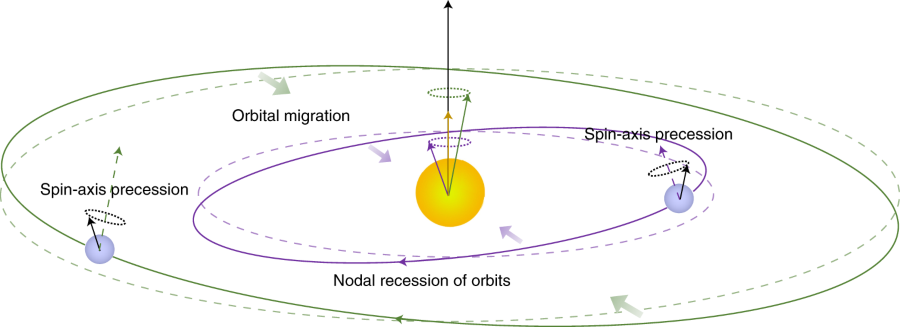
For almost a decade, astronomers have tried to explain why so many pairs of planets outside our solar system have an odd configuration — their orbits seem to have been pushed apart by a powerful unknown mechanism. Yale researchers say they’ve found a possible answer, and it implies that the planets’ poles are majorly tilted.
The finding could have a big impact on how researchers estimate the structure, climate, and habitability of exoplanets as they try to identify planets that are similar to Earth. The research appears in the journal Nature Astronomy.
NASA’s Kepler mission revealed that about 30% of stars similar to our Sun harbor “Super-Earths.” Their sizes are somewhere between that of Earth and Neptune; they have nearly circular and coplanar orbits; and it takes them fewer than 100 days to go around their star. Yet curiously, a great number of these planets exist in pairs with orbits that lie just outside natural points of stability.
That’s where obliquity — the amount of tilting between a planet’s axis and its orbit — comes in, according to Yale astronomers Sarah Millholland and Gregory Laughlin.

“When planets such as these have large axial tilts, as opposed to little or no tilt, their tides are exceedingly more efficient at draining orbital energy into heat in the planets,” said first author Millholland, a graduate student at Yale. “This vigorous tidal dissipation pries the orbits apart.”
A similar, but not identical, situation exists between Earth and its moon. The moon’s orbit is slowly growing due to dissipation from tides, but Earth’s day is gradually lengthening.
Laughlin, who is a professor of astronomy at Yale, said there is a direct connection between the over-tilting of these exoplanets and their physical characteristics. “It impacts several of their physical features, such as their climate, weather, and global circulations,” Laughlin said. “The seasons on a planet with a large axial tilt are much more extreme than those on a well-aligned planet, and their weather patterns are probably non-trivial.”
Millholland said she and Laughlin already have started work on a follow-up study that will examine how these exoplanets’ structures respond to large obliquities over time.

